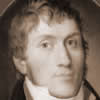
On 3 July 2014, the Australian Prime Minister Tony Abbott addressed the Australia-Melbourne Institute on the benefits of foreign investment. Himself an English migrant, Abbott praised the British colonisation of the continent as a far-sighted form of foreign investment.
As reported in the Sydney Morning Herald, Abbott said,
Our country is unimaginable without foreign investment.
I guess our country owes its existence to a form of foreign investment by the British government in the then unsettled or, um, scarcely settled, Great South Land
The statement evoked criticism from a wide range of sources, mostly aimed at the idea that Australia had been ‘unsettled’ prior to the arrival of British settlers. But there are two other aspects worthy of note. The first is Abbott’s self-conscious vagueness: ‘I guess…’ and ‘unsettled or, um, scarcely settled’. This seems to be Abbott’s way of playing to his conservative audience, poking fun at political correctness.
The second is a little less obvious. The ‘Great South Land’ is an important construction in Abbott’s historical narrative. The description ‘Great South…’ or ‘Great Southern…’ is a familiar trope in Australian nationalism. It’s often added to anthems, names of hotels or businesses that attempt to proudly proclaim their Australianness. It has rarely been used politically until now, but Abbott has now tapped into the Eurocentrism that lies behind this epic title. This ‘Great South Land’ beckons opportunity, just waiting for an enterprising race to realise its potential. While we might hear strains of didgeridoo in the background, the real action is in pastoral development, mining and tourism.
This connection is made evident in the less common use of the phrase in Christian ministry. As this video tells, the Christian mission in Australia was foretold by the Jesuit explorer Quiros who discovered the continent in 1606 on the day of Pentacost, claiming it as ‘the Great South Land of the Holy Spirit’ (actually La Australia de Espíritu Santo). The singer Geoff Bullock engages this legend to construct a uniquely Australian Christianity.
But such a narrative remains steadfastly European. It depicts Australia as object of the European gaze, as an infinite land yet to be touched by civilisation. Like the other great nationalist trope, the Southern Cross, it is more about the remorseless extension of the familiar than engagement with the new. The challenge for Australia is to find a South for itself which is genuine – a South that does not contain within it a European exceptionalism, but offers instead a point of connection with other Souths across the periphery – Great Southern Lands.




 Jorgen Jorgenson was a Danish adventurer who travelled to Tasmania twice, first in the founding party of Hobart and then as a convict. Between visits, he had been bestowed with the title of the first King of Iceland. He wrote many books, including a study of Tasmanian aborigines. His life sustains a ongoing link between the northern and southern extremes, which has come to prominence again with his upcoming bicentenary.
Jorgen Jorgenson was a Danish adventurer who travelled to Tasmania twice, first in the founding party of Hobart and then as a convict. Between visits, he had been bestowed with the title of the first King of Iceland. He wrote many books, including a study of Tasmanian aborigines. His life sustains a ongoing link between the northern and southern extremes, which has come to prominence again with his upcoming bicentenary.